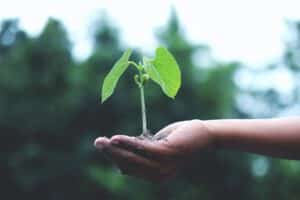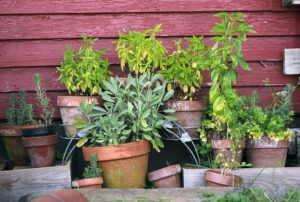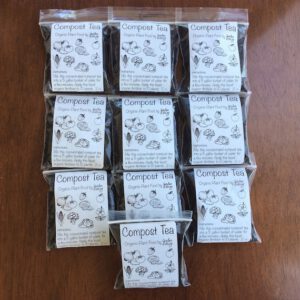HOW TO GROW ORGANIC THYME
Chappy the gardener is excited to share his tips on how to grow organic thyme. This fragrant herb is perfect for adding flavor to dishes and is easy to grow with just a few simple tips.
With spring right around the corner, now is the perfect time to start planning your herb garden. Chappy will show you how to start thyme from seed, how to care for it, and how to harvest it. He will also share his favorite recipes that feature thyme.
Thyme Menu
What is organic thyme?
Thyme has been used for centuries as both a medicinal herb and a flavoring agent in food. There are many different types of thyme, but the most common is organic thyme. Organic thyme is grown without the use of pesticides or other chemicals, making it a healthier and more sustainable choice. Thyme is a versatile herb that can be used in both savory and sweet dishes. It has a strong, earthy flavor that can be used to add depth to sauces, soups, and stews. Thyme is also great in baked goods and can be added to tea for a soothing drink.
HOW TO GROW ORGANIC THYME
Start with a healthy soil mix
Organic thyme is a wonderful herb to have in the garden. It’s easy to grow from seed, and once established, it will self-seed and come back year after year. Thyme also grows well in containers, making it a perfect choice for a small herb garden. The key to success with growing organic thyme is starting with a healthy soil mix.
Amend your soil with compost
Compost is a valuable amendment for soil because it helps to improve soil structure, water retention, and fertility. It also provides essential nutrients for plants, helps to suppress plant diseases, and attracts beneficial insects. When using compost as an amendment for thyme plants, be sure to mix it in well with the soil so that the roots can easily access the nutrients.
Water your thyme plants regularly
The best time to water thyme is in the morning, when the sun isn’t as strong and the temperature is cooler. Be sure not to overwater thyme, as this can lead to root rot. If the soil feels dry to the touch, it’s time to water your plants.
Harvest thyme regularly for best results
Thyme is a fragrant herb that can be used in many different dishes. It has a slightly lemony taste and is great in soups, stews, and sauces. Thyme is also a great addition to meats like chicken and pork. Harvesting thyme is easy and can be done regularly for the best results.
Protect your thyme plants from pests and diseases
Thyme is a popular herb grown in home gardens for its attractive foliage and strong, aromatic flavor. Like other plants, thyme can be susceptible to pests and diseases. Here are a few tips to help protect your thyme plants from these problems.
One of the most common pests of thyme is the whitefly. These tiny insects can cause leaves to yellow and fall off the plant. To control whiteflies, you can spray your plants with an insecticidal soap or horticultural oil.
Thyme is also prone to fungal diseases, such as powdery mildew and botrytis blight. These diseases can cause leaves to turn brown and die. To help prevent disease, make sure your plants have good air circulation and avoid over-watering. You can also spray your plants with a fungicide periodically.
Propagate new thyme plants from cuttings
Thyme is a fragrant, perennial herb that is easy to propagate from cuttings. New plants will form roots and start to grow in just a few weeks. In late spring or early summer, select a healthy, green stem with at least two sets of leaves. Cut the stem just below a node (the point where a leaf meets the stem). Remove the lower leaves and dip the cutting in water or rooting hormone. Place the cutting in a small pot filled with moist soil and keep it in a warm, sunny location.
How does thyme grow best?
Thyme (Thymus vulgaris) is a woody perennial that is drought-tolerant and easy to grow. Thyme grows best in full sun and well-drained soil. The plant can be propagated by division or from stem cuttings.
How to grow thyme indoors
Thyme is a fragrant herb that can be used in cooking or to make teas. It can also be used to make a room smell nice. Thyme is easy to grow indoors and will thrive in a sunny spot.
Start with a healthy plant
If you are looking for a low-maintenance herb to grow indoors, thyme is a great option. It can be started from a cutting or from a small seedling, and once it’s established, it will only need weekly watering. Thyme thrives in sunny locations, but can also grow in shadier spots if needed. It’s perfect for adding flavor to dishes or for using as a medicinal herb.
Choose the right pot
As a versatile herb, thyme can be used in both savory and sweet dishes. It also has many medicinal properties. If you’re looking to grow thyme indoors, it’s important to choose the right pot. A clay pot with a drainage hole is ideal, as is a pot that is at least six inches deep. The soil should be light and well-drained, and you should keep the plant in a sunny spot.
Use the right soil
Thyme is an aromatic evergreen herb that can be used fresh or dried in many dishes. It’s also great for adding flavor to teas and ointments. Thyme is a hardy plant that can be grown both indoors and outdoors, but it needs the right soil to grow well.
Water regularly
No herb is as versatile as thyme. It can be used fresh in almost any dish or dried and stored away for later use. And, best of all, it’s one of the easiest plants to grow indoors. Thyme needs only a small amount of water and moderate sunlight to thrive.
Give it plenty of light to grow thyme indoors
One of the easiest herbs to grow indoors is thyme. It doesn’t require a lot of light, and it’s a hardy plant that can withstand a bit of neglect.
How to grow thyme hydroponically
Thomspon’s thyme (Thymus vulgaris) is a perennial herb that is easy to propagate from cuttings. It can be grown hydroponically in a soilless medium with a pH of 6.0-6.5. The optimum growing temperature for thyme is 18-24 degrees C (64-75 degrees F).
Can you grow herbs in a greenhouse?
Greenhouses are a great way to extend the growing season for plants like herbs. Not only can you grow them earlier in the spring and later into the fall, but you can also keep them going all winter long. Herbs grown in a greenhouse tend to be bigger and bushier than those grown outside, and they often have more flavor, too.
How to plant thyme in a GreenHouse
Thyme is a hardy herb that can be planted in a greenhouse in late winter or early spring. The plants will grow slowly at first, but will soon begin to put on new growth and thrive in the warm, sunny conditions of a greenhouse. To plant thyme in a greenhouse, start by preparing a potting mix of equal parts soil and sand. Dig a hole in the center of the potting mix and place the thyme plant in it, filling in around the roots with more potting mix. Water well and place the pot in a sunny spot in the greenhouse.
Want to grow herbs at home regardless of the seasons and how much sun there is outside?
How to water thyme in a GreenHouse
Watering thyme in a GreenHouse can be a daunting task, but if done correctly can lead to a healthy and thriving thyme plant. The most important part of watering thyme is making sure the soil is moist at all times, but not waterlogged. To achieve this, it is best to water the thyme plant slowly and evenly until the soil is wet. If the soil is allowed to dry out even for a short period of time, it can be difficult to get the plant back on track.
How to fertilize thyme in a GreenHouse
Thyme is a perennial herb that can be grown in a greenhouse. Thyme requires well-drained soil and full sun.
You can fertilize thyme with a organic fertilizer, such as compost.
How to keep pests away from thyme in a GreenHouse
There are many ways to keep pests away from thyme in a greenhouse. One way is to plant thyme among other plants that pests do not like. Another way is to use a pesticide. A third way is to use row covers to cover the plants. Row covers are made of a thin material that covers the plants and keeps pests away.
How to harvest thyme in a GreenHouse
Thyme is a great herb to grow in a greenhouse. It is easy to care for and can be harvested throughout the growing season. In order to harvest thyme in a greenhouse, you will need to first clip the stems just above the leaves. You can then strip the leaves from the stem and use them fresh or dried.
The benefits of companion planting thyme
Companion planting thyme is a great way to improve the health of your garden while keeping pests at bay. Thyme is a natural insect repellent, so it can be planted near other plants that are susceptible to pests. Additionally, thyme releases a strong aroma that masks the scent of other plants, making it difficult for pests to find them. Thyme also attracts beneficial insects like ladybugs and lacewings, which prey on harmful insects.
Thyme helps repel pests
Pests can be a nuisance in the garden, but there are ways to deter them. One way is to use thyme. Thyme is a fragrant herb that pests don’t like the smell of. It can be planted around vegetables and fruits to keep pests away.
Thyme is a natural herbicide
Thyme is a natural herbicide that can be used to kill weeds without using harmful chemicals. It is effective against a variety of weed types, and can be used on both lawns and gardens. Thyme is easy to grow, and can be propagated by division or from seed. It is also drought tolerant, making it a good choice for areas that are difficult to water.
Thyme improves the soil quality
Thyme is a common herb that is often used in cooking. It has many other uses, however, including improving the quality of soil. Thyme contains thymol, which is a natural disinfectant and pesticide. This makes thyme an effective herb for use in organic gardening. Thyme can be added to soil as either a mulch or a tea. It helps to suppress weeds, and also adds nutrients to the soil.
Thyme attracts pollinators
Thyme is a small herb that grows in many different climates. It has tiny purple flowers that attract pollinators, such as bees and butterflies. Thyme is used in cooking, and the leaves can be dried and used as a seasoning. Thyme is also used to make essential oil, which has antibacterial properties.
Thyme is a medicinal herb
Thyme is a small, perennial herb that is found in many gardens. The leaves and flowers of the thyme plant can be used to make medicine. Thyme is used to treat respiratory infections, such as bronchitis and whooping cough. It is also used to treat indigestion and other stomach problems.
Thyme is a delicious herb to cook with!
In conclusion, thyme is a great herb to grow in your garden, and it’s easy to do so. Just follow these simple steps, and you’ll be enjoying fresh thyme in no time. If you have any questions, please don’t hesitate to ask in the comments below. Thanks for reading!
Herbs Menu
Helps Us Grow – Share If You Like








